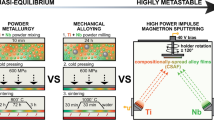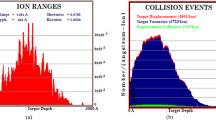Abstract
An anodically oxidised layer of aluminium was found to be a satisfactory substrate for holding millicurie amounts of carrier-free147Pm activity, which is used as a source of β-radiation in β-ray thickness gauges. The sources fabricated by this method showed satisfactory performance regarding leaching and adherence of the radioactivity held up in the oxide layer. Details regarding the anodic oxidation conditions used for making these source substrates are given. Leaching studies conducted on these sources indicated influence of the acid concentration at which147Pm activity was deposited in the oxide layer. Better performance characteristics of these sources could be achieved whenever147Pm activity was absorbed in the oxide layer under near neutral conditions of acidity.
Similar content being viewed by others
References
P. H. Burgess, W. J. Iles, Radiat. Prot. Dosim., 5 (1983) 125.
P. A. Malachesky, Encyclopedia of Electrochemistry of the Elements, Vol. 6,A. J. Bard (Ed.) 1976, p. 147.
Author information
Authors and Affiliations
Rights and permissions
About this article
Cite this article
Balasubramanian, P.S. Anodically oxidised aluminium layer as a useful substrate for the fabrication of147Pm sources for beta-ray thickness gauges. J Radioanal Nucl Chem 223, 79–81 (1997). https://doi.org/10.1007/BF02223367
Received:
Issue Date:
DOI: https://doi.org/10.1007/BF02223367




